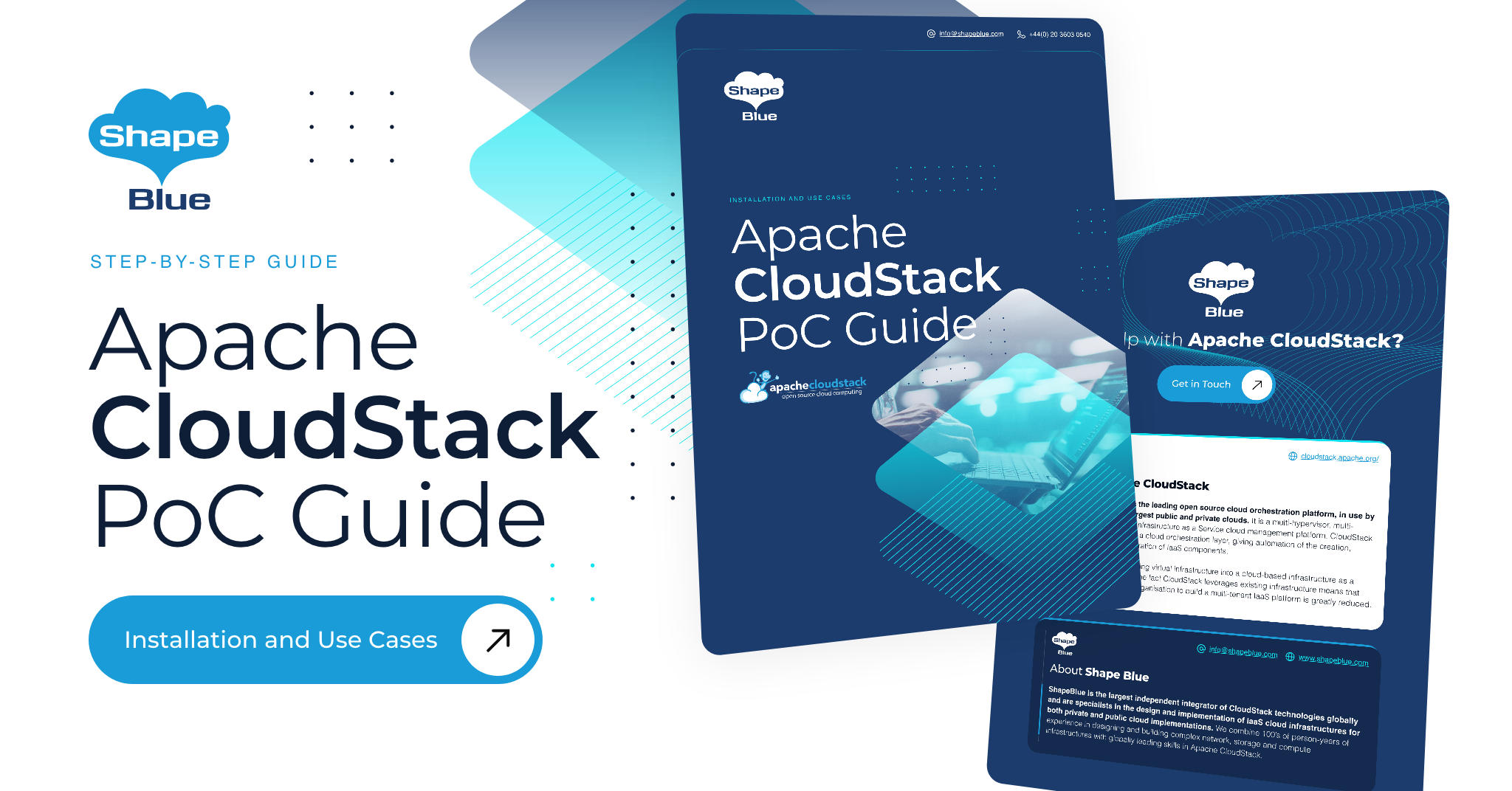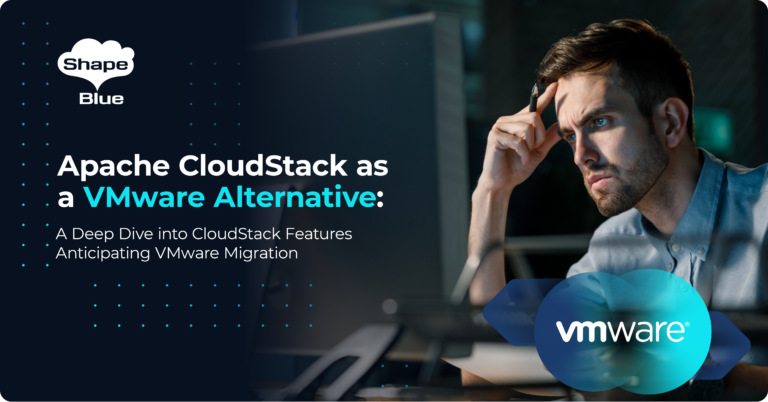
Download Our Apache CloudStack Guide
This POC guide gives you all the guidance you need to perform a successful Proof of Concept of Apache CloudStack.
By following this guide, you will be prepared for what to expect from the technology and how to move into production. The guide gives detailed configuration information. At the end of this PoC, you will have a highly available, reliable and flexible CloudStack-powered cloud.
Following this guide should allow you to feel confident enough in setting up and managing a CloudStack IaaS environment and should give a smooth implementation of the cloud orchestration layer in your infrastructure.
Get the PoC Guide by Filling Out The Form Below
What’s Inside?
Chapter 1
At the end of this chapter, you will be able to manage and operate your CloudStack.
Topics covered:
- Hardware and software requirements
- Detailed physical infrastructure architecture layout
- Apache CloudStack logical design
- Deploy and configuration of the Apache
- CloudStack management server
- MySQL Database Server setup
- KVM hypervisor deployment and setup
- Networking configuration
- Adding a CloudStack Availability Zone
Chapter 2
This model can be used to define, for example, departments within the same organization if used to build private clouds or, different customers when it is used to build public clouds. You could also have a specific domain for sales partners or customers for example.
Topics covered:
- Managing Domain
- Setting resource limits
- Managing User Accounts
Chapter 3
This use case provides you with a basic overview of launching, resizing, and managing an Apache CloudStack instance.
Apache CloudStack has a UI that allows you to obtain and configure capacity with minimal fricton. It provides you with complete control of your computing resources and lets you run on Apache CloudStack proven computing environment. Apache CloudStack reduces the time required to obtain and boot new server instances to minutes, allowing you to quickly scale capacity, both up and down, as your computing requirements change.
Topics Covered:
After you have finished this practical exercise, you will then take the following Proof-of-Concept tests:
- Registering a new template
- Creating an isolated network
- Modifying egress firewall rules
- Launching an instance
- Using Userdata
- Managing Firewall
- Scaling up/down Instance
- Instance console access
- Terminate instance
- Recover instance
- Expurge instance
Chapter 4
Virtual Private Cloud lets you provision an architecture that resembles a traditional physical network. VPC implements: Tiering isolation, ACL, Site-to-site IPsec VPN, Client VPN and Internal and External Load Balancer.
Topics covered:
- How to create VPC
- How to create ACLs List
- How to subneting VPC
- How to create internal and external Load Balancer
Meet the Author
Marco Sinhoreli, Technical Marketing Manager at ShapeBlue
Marco Sinhoreli works as a Technical Marketing Manager at ShapeBlue. Marco has a depth of experience in helping big organisations implement CloudStack. He has been consulting major companies in Brazil for their CloudStack environments. In addition, he has a strong understanding of the struggle that cloud builders and IaaS providers can experience and how open-source technologies and ACS can help them. Away from work, Marco is a lover of music (playing a mean guitar) and politics.

